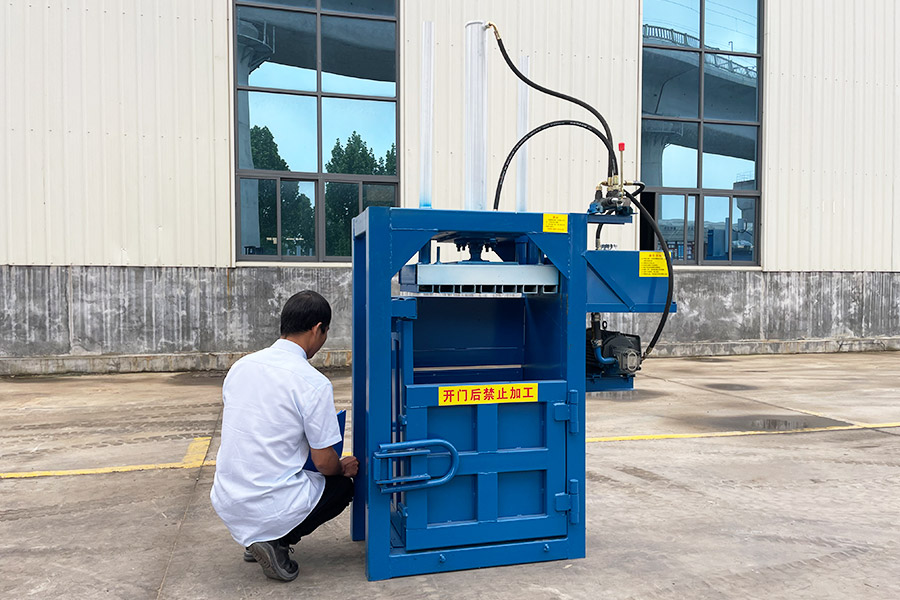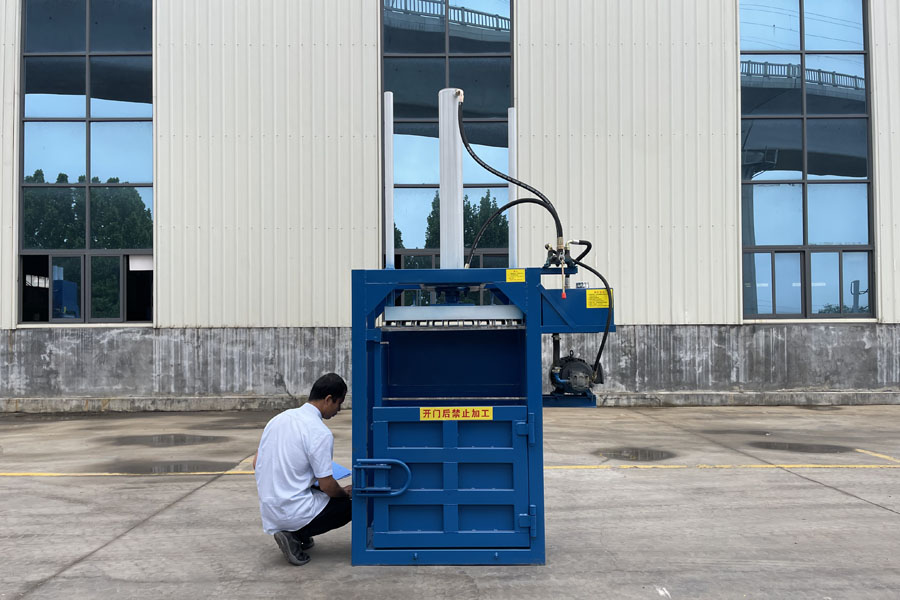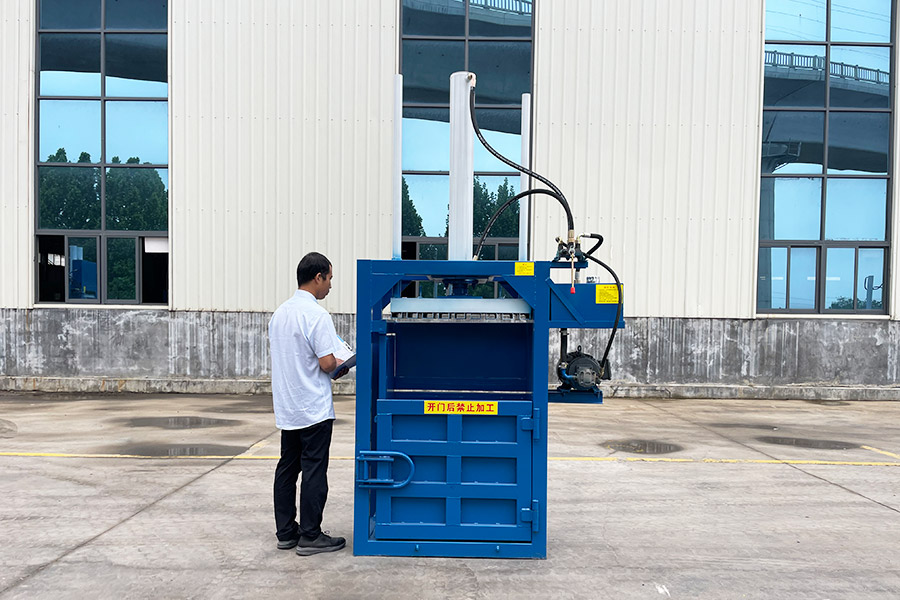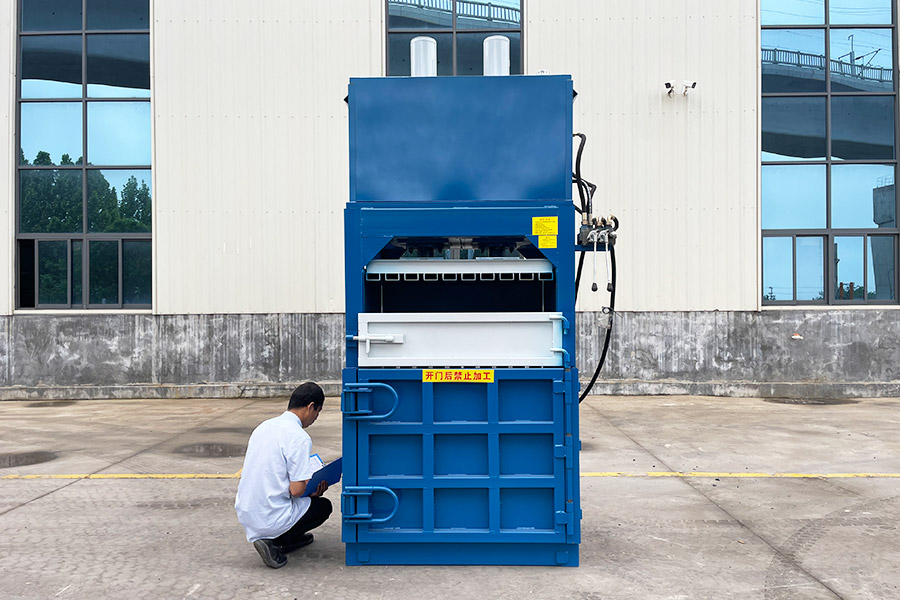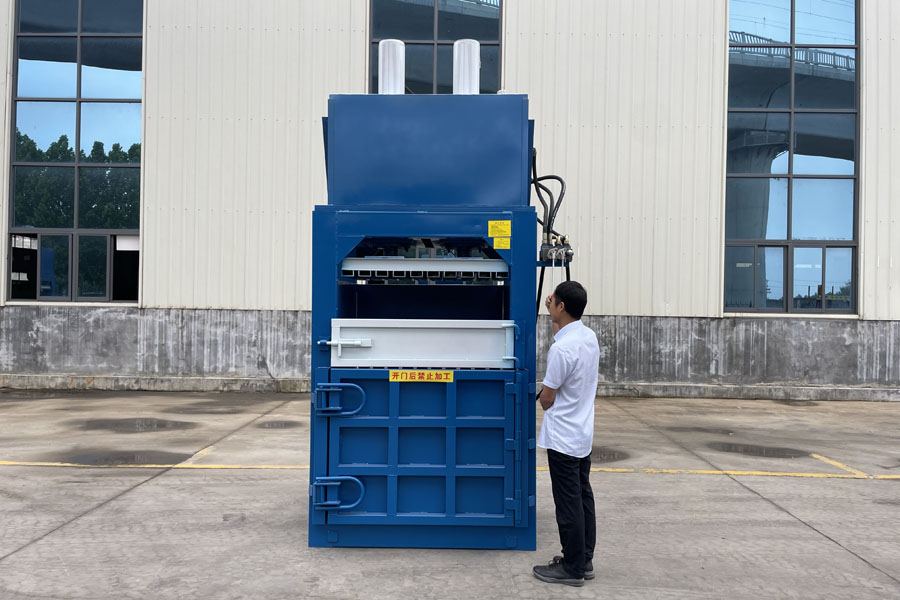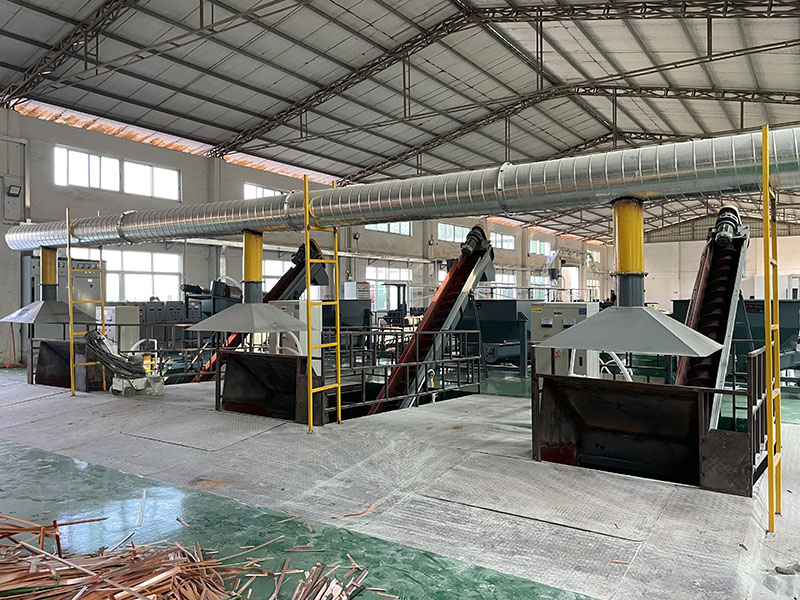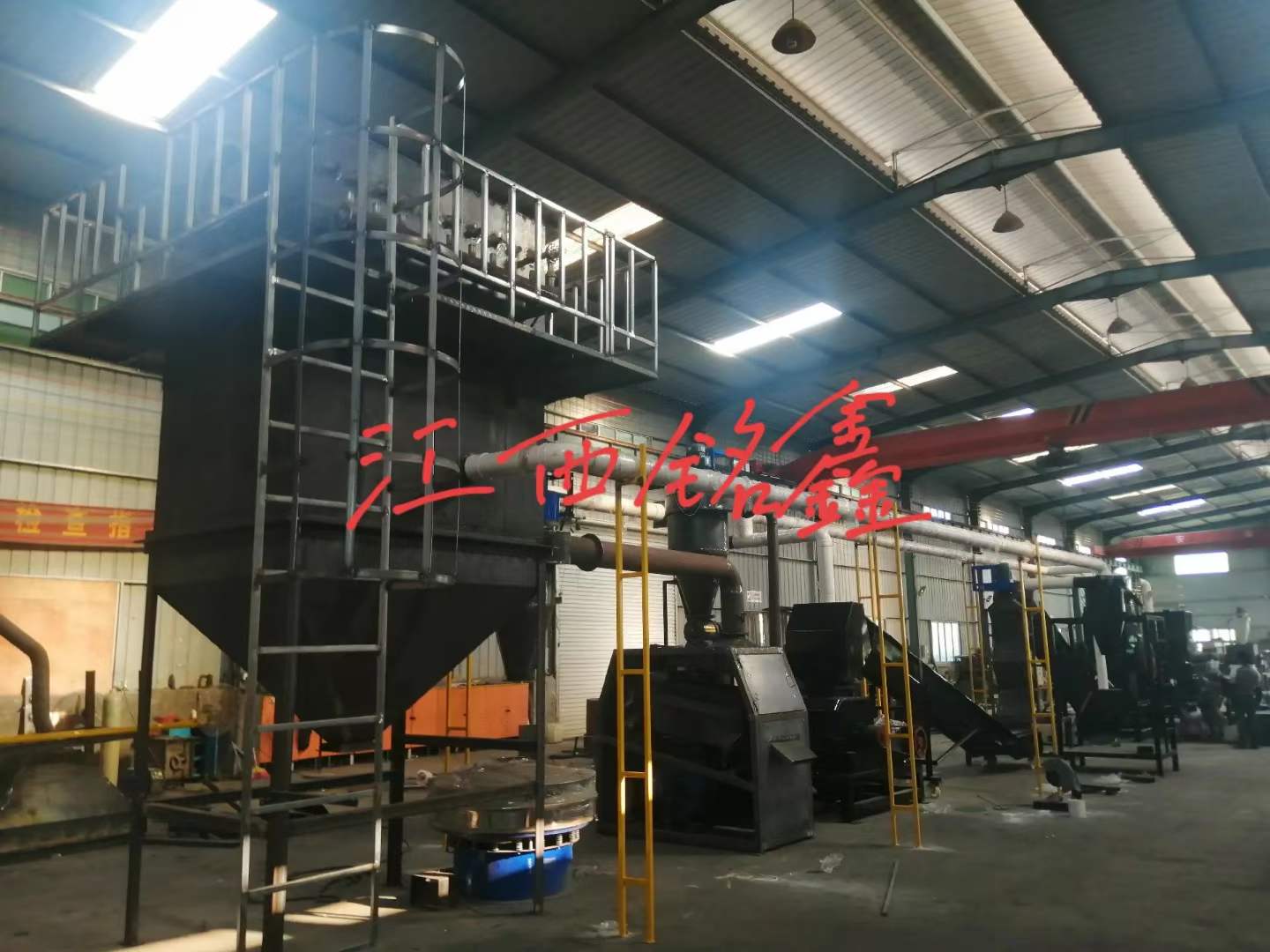Vertical balers are a type of equipment used to compress and bale materials, and are widely used in the recycling industry and various waste-generating enterprises. The working principle is to compress the material in a vertical direction, with the waste loaded from the top, thus forming a compact bale for easy transportation and storage.
The working principle of the vertical baler is based on a hydraulic system, which compresses the material through the pressure provided by the hydraulic cylinder. After the material is compacted, it is usually tied with wire or plastic straps to ensure the stability of the bale. After the bale is completed, the compacted bales are automatically or manually discharged for subsequent processing or transportation.
Application areas
Vertical balers are widely used in the following areas:
Recycling centers: used to compress and bale various recyclable materials such as cardboard, plastic and metal.
Manufacturing plants: used to bale waste generated during the production process, such as metal shavings, plastic scraps, etc.
Supermarkets and retail stores: used to compress packaging cardboard, plastic film, etc., to reduce storage space and transportation costs.
Agriculture: used to bale agricultural by-products such as straw and hay as livestock feed or bedding.
Medical and hazardous waste treatment: used to compress medical waste and other hazardous materials to ensure safe disposal.
General waste management: used to compress non-hazardous waste generated in daily life and commercial activities.
Vertical balers help companies reduce transportation and storage costs by reducing the volume of waste, while improving recycling efficiency, which is of great significance to environmental protection and resource reuse.
One of the core functions of a vertical baler is its hydraulic system, which directly determines the compression capacity and efficiency of the baler. The hydraulic system compresses the material through the pressure provided by the hydraulic cylinder to reduce the volume of waste.
Hydraulic system: The hydraulic system usually consists of a hydraulic pump, a control valve, a hydraulic cylinder, an oil tank, etc. The hydraulic pump is responsible for providing pressure oil, the control valve is used to adjust the direction and pressure of the oil flow, and the hydraulic cylinder is the main component for performing the compression action. The oil tank is used to store and cool the hydraulic oil.
Compaction ratio: The compaction ratio is a key indicator to measure the performance of a vertical baler. It represents the ratio of the volume of the raw material to the volume after compression. According to market data, the compaction ratio of a vertical baler can usually reach 5:1, which means that the compressed volume is only 1/5 of the volume of the raw material. For example, the compaction ratio of Shuli vertical balers is 5:1, which can significantly reduce the volume of waste, save storage space and transportation costs.
Operation mode
The operation mode of vertical balers is mainly divided into two modes: manual and automatic.
Manual operation: The operator needs to manually load the material, manually control the hydraulic system for compression, and finally manually bundle and pack. This operation mode is suitable for small businesses or scenarios with small amounts of waste.
Automatic operation: Fully automatic vertical balers are usually equipped with PLC (programmable logic controller) to automatically complete the entire process of loading, compression, bundling and discharge. This operation mode is suitable for large-scale waste treatment and can greatly improve efficiency and safety.
Maintenance and troubleshooting
Maintenance and troubleshooting of vertical balers are key to ensuring long-term and stable operation of equipment.
Daily maintenance: including checking the oil level and cleanliness of the hydraulic oil, cleaning the oil tank filter, checking whether the oil pipe has leaks, and checking the functions of the electrical circuit and control panel.
Troubleshooting: Common faults include no pressure or low pressure in the hydraulic system, no belt feeding during operation, inadequate belt feeding, and no belt cutting after tightening. Troubleshooting these faults usually requires checking related circuits, door switches, solenoid valves, reels and other components.












